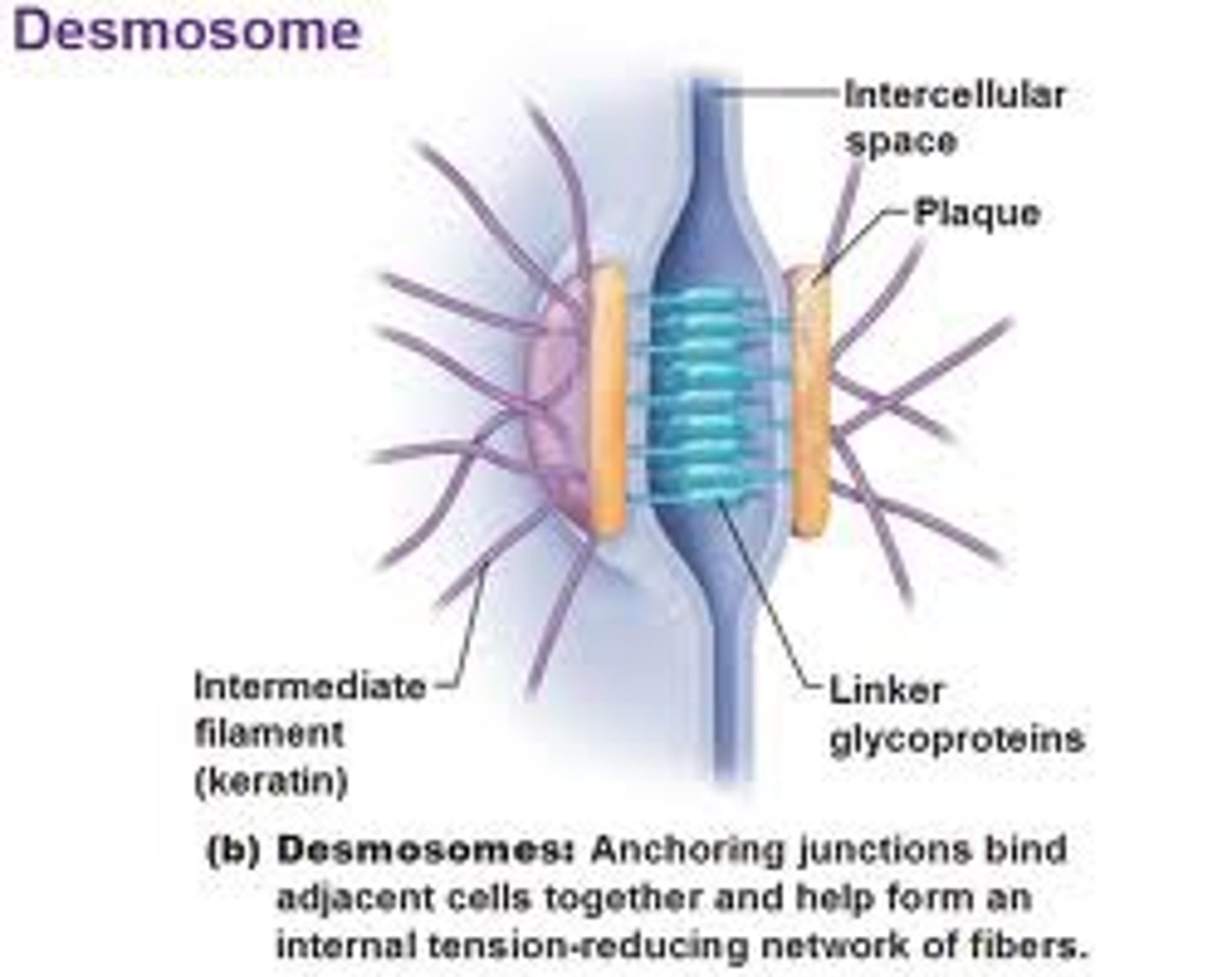IB Biology - membranes
1/67
There's no tags or description
Looks like no tags are added yet.
Name | Mastery | Learn | Test | Matching | Spaced |
|---|
No study sessions yet.
68 Terms
What is the phospholipid bilayer?
two sheets of phospholipid molecules in which the fatty acid tails are facing inwards and the hydrophilic phosphate ends facing outward to form a membrane.

What does the phospholipid bilayer do?
forms a boundary between the cell and its external environment and regulates what can enter and exit the cell
What does selective permeability mean?
The cell membrane allows some, but not all, molecules to cross
What molecules can easily pass through the cell membrane?
Small and non-polar molecules
Why can small non-polar molecules pass through the cell membrane easily?
They are small enough to pass through the gaps and they won't get repelled by the hydrophobic core
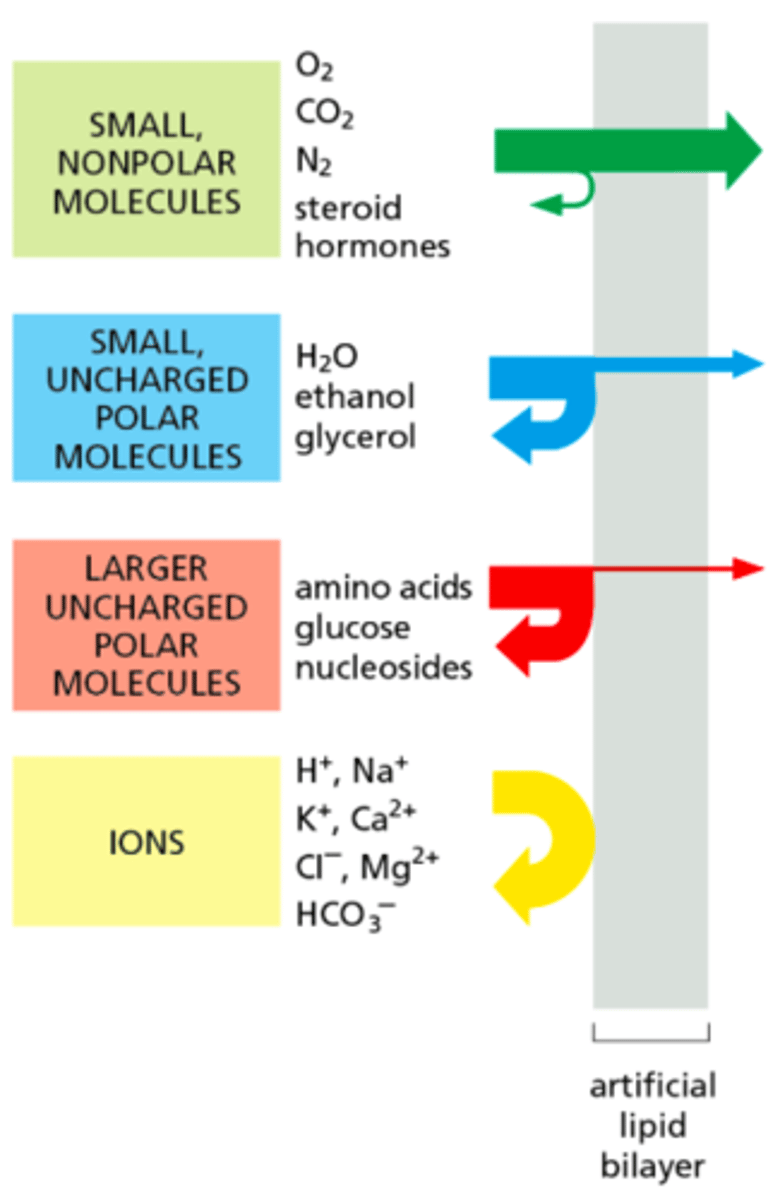
Why can't non-polar molecules pas through the cell membrane easily?
Initially, they can pass through the gaps of between the phosphate heads but once they reach the hydrophobic core they get repelled
What is simple diffusion?
when molecules spread from an area of high to an area of low concentration, down the concentration gradient which doesn't require energy

How does concentration gradient affect the rate of diffusion?
As it increases, the rate of diffusion increases
How does particle size affect the rate of diffusion?
Smaller particles diffuse faster and easier
How does polarity affect the rate of diffusion?
non polar solutes cross bilayers faster than polar ones as they experience no repulsion from the membrane's hydrophobic core
What is facilitated diffusion?
The passive movement of a specific particle across a cell membrane via a channel protein.
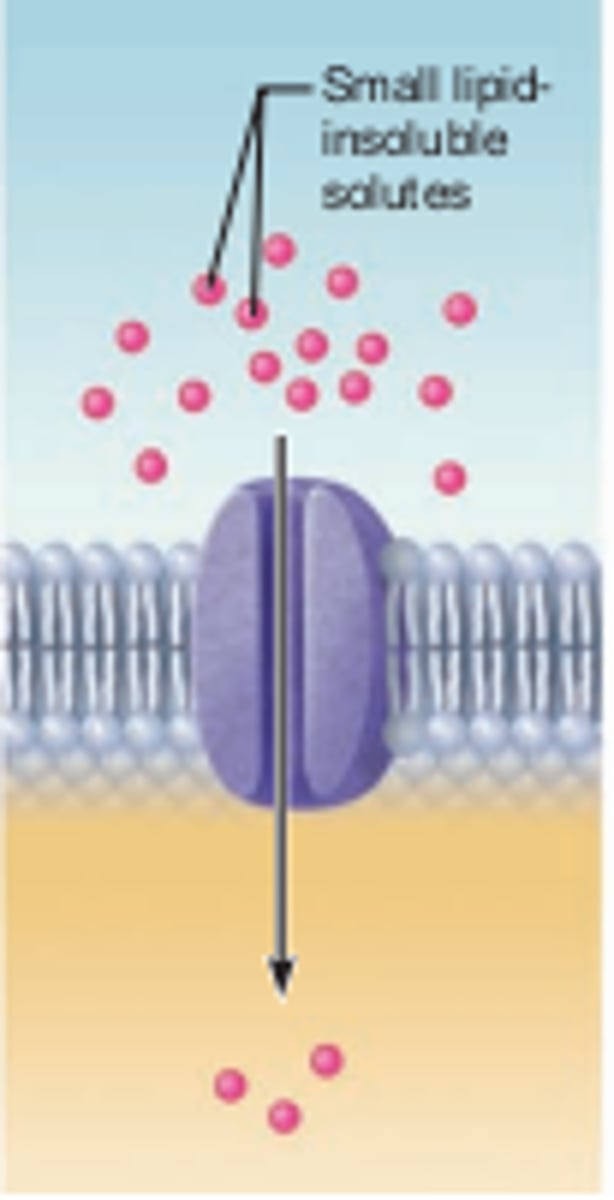
What is a channel protein?
An integral transmembrane protein with a pore of a specific diameter and certain chemical properties that allow for only one type of molecule to pass through
What is a pump protein?
A transmembrane integral protein that transports molecules via active transport
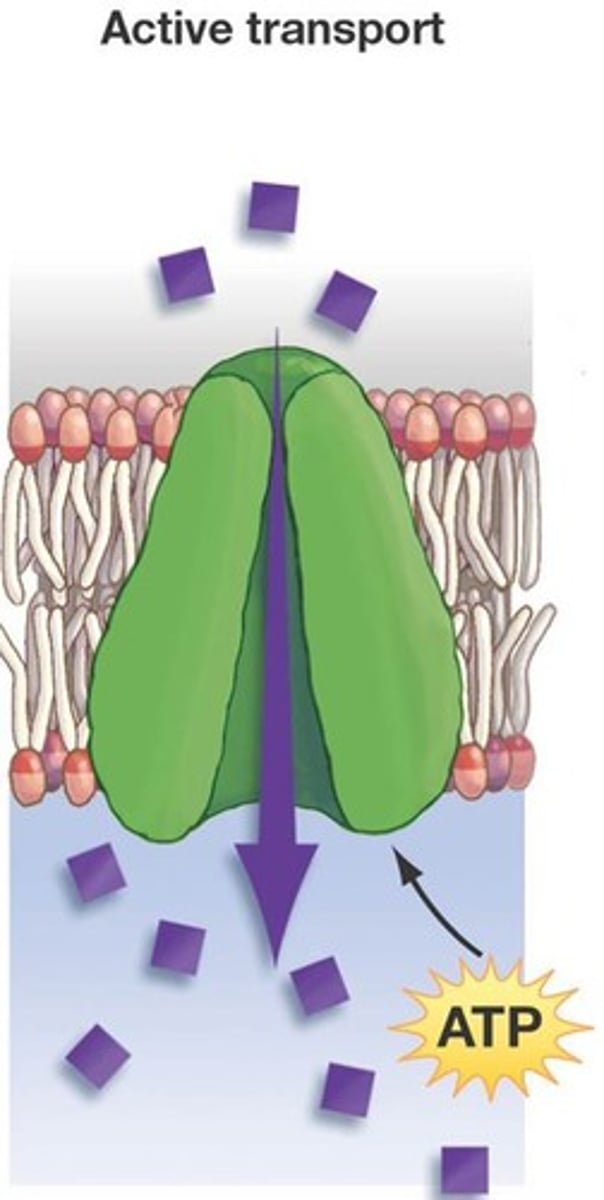
What is osmosis?
The passive movement of water from high to low concentration across a semi-permeable membrane
What is an aquaporin?
Specific channels for water to pass through. Some cells have this to greatly increase their permeability to water.

Why do aquaporins have a positive charge?
To prevent H+ ions from passing through
Suggest types of cell where aquaporins might be found?
Root hair cells and kidney cells
Where do membrane proteins come from?
They are synthesised by bound ribosomes and then brought to the membrane by exocytosis
What is an integral protein?
A protein embedded in the plasma membrane.
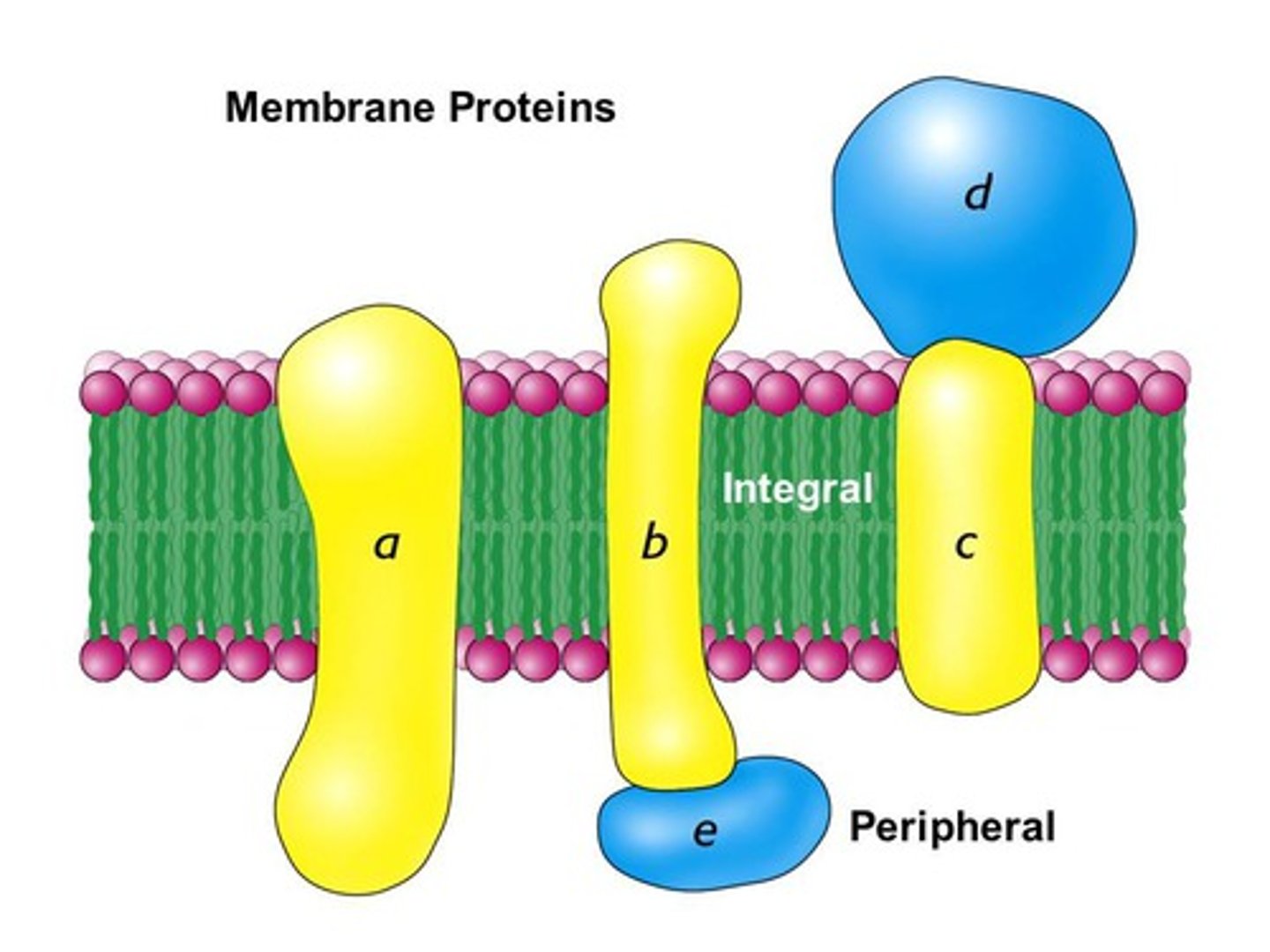
Why must an integral protein have both hydrophobic and hydrophilic parts?
Because they are embedded among the fatty acid tails of the membrane and the phosphate heads by the surface
What is a peripheral protein?
A hydrophilic protein anchored to the membrane by a single hydrocarbon chain or loosely attached to an integral protein

How do some membrane proteins act as hormone receptors?
A hormone can bind to it which triggers a response by the cell
How do membrane proteins help with anchorage?
Cells use intergrins to anchor to the intercellular matrix
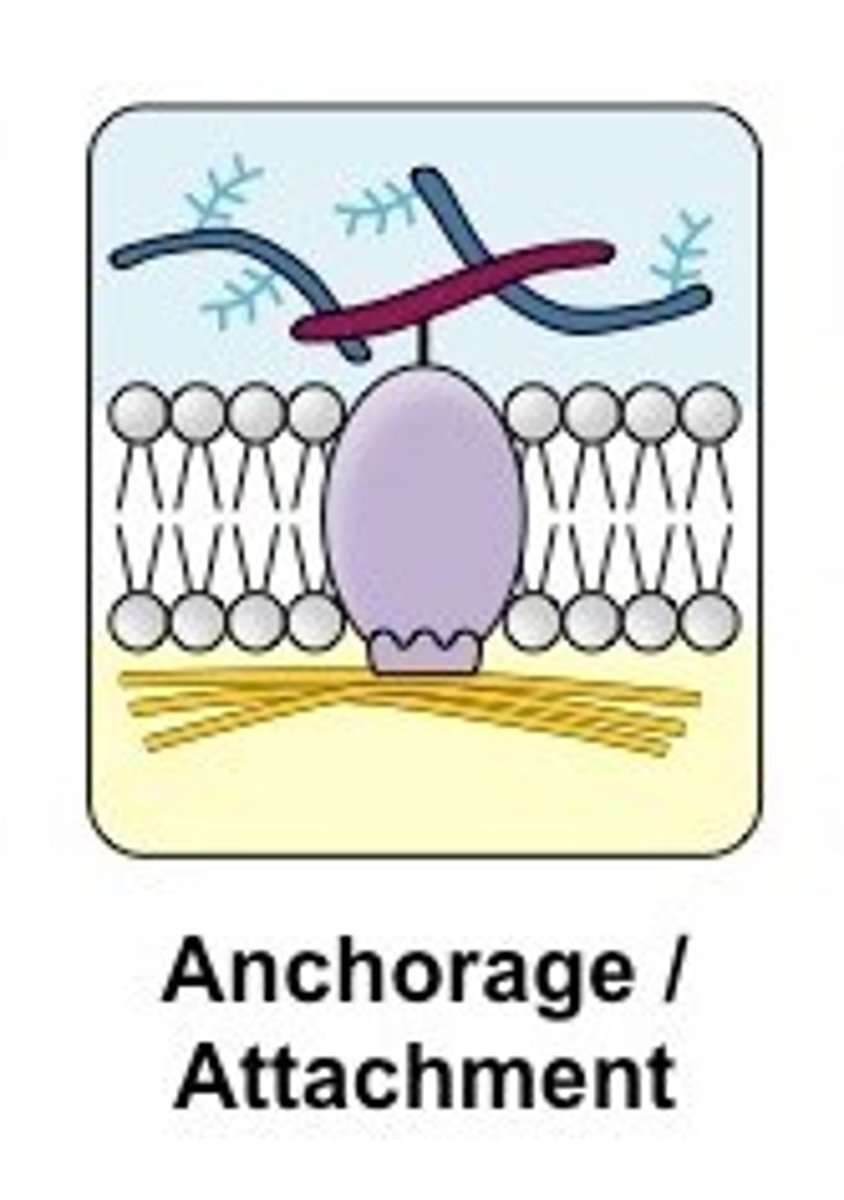
What is a chemical receptor protein?
When a chemical signal attaches to it which triggers a response by the cell
How do sensory receptors work?
Triggered by non-chemical stimuli e.g temperature to either open or close an ion channel which sends a message to the nervous system
In which way do membrane proteins help with transport?
Being a channel or a pump
2 multiple choice options
Are some membrane bound proteins enzymes?
Yes
1 multiple choice option
What are the diverse functions of membrane proteins?
transport, receptors (chemical, sensory and hormone), recognition, adhesion and anchorage
Why is the phospholipid bilayer described as "fluid-mosaic"?
It's fluid because the membrane can move laterally. Mosaic refers to the many different components of the membrane
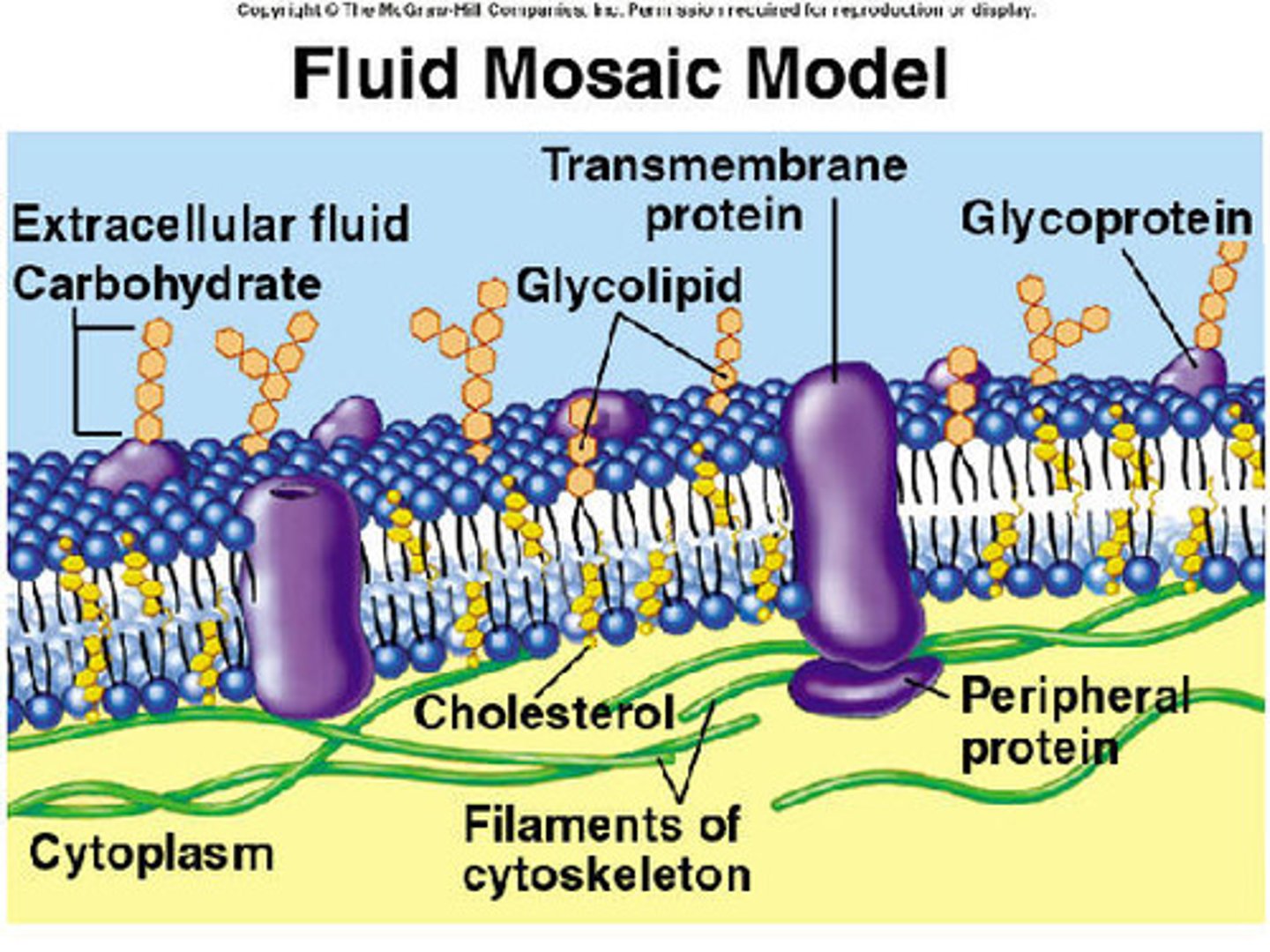
What is a glycoprotein?
A protein with a carbohydrate molecule attached.
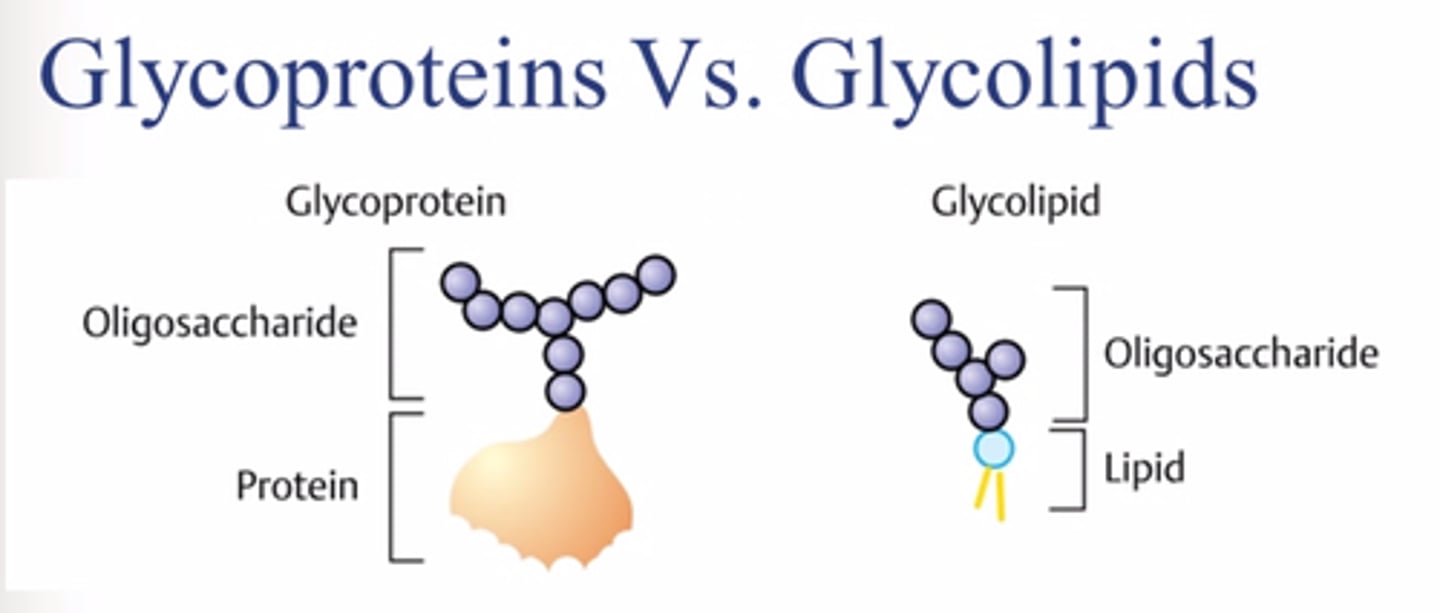
How does a glycoprotein help with cell adhesion?
They form a layer on the outside of the membrane called a glycocalyx which helps cells bind to each other to form tissues
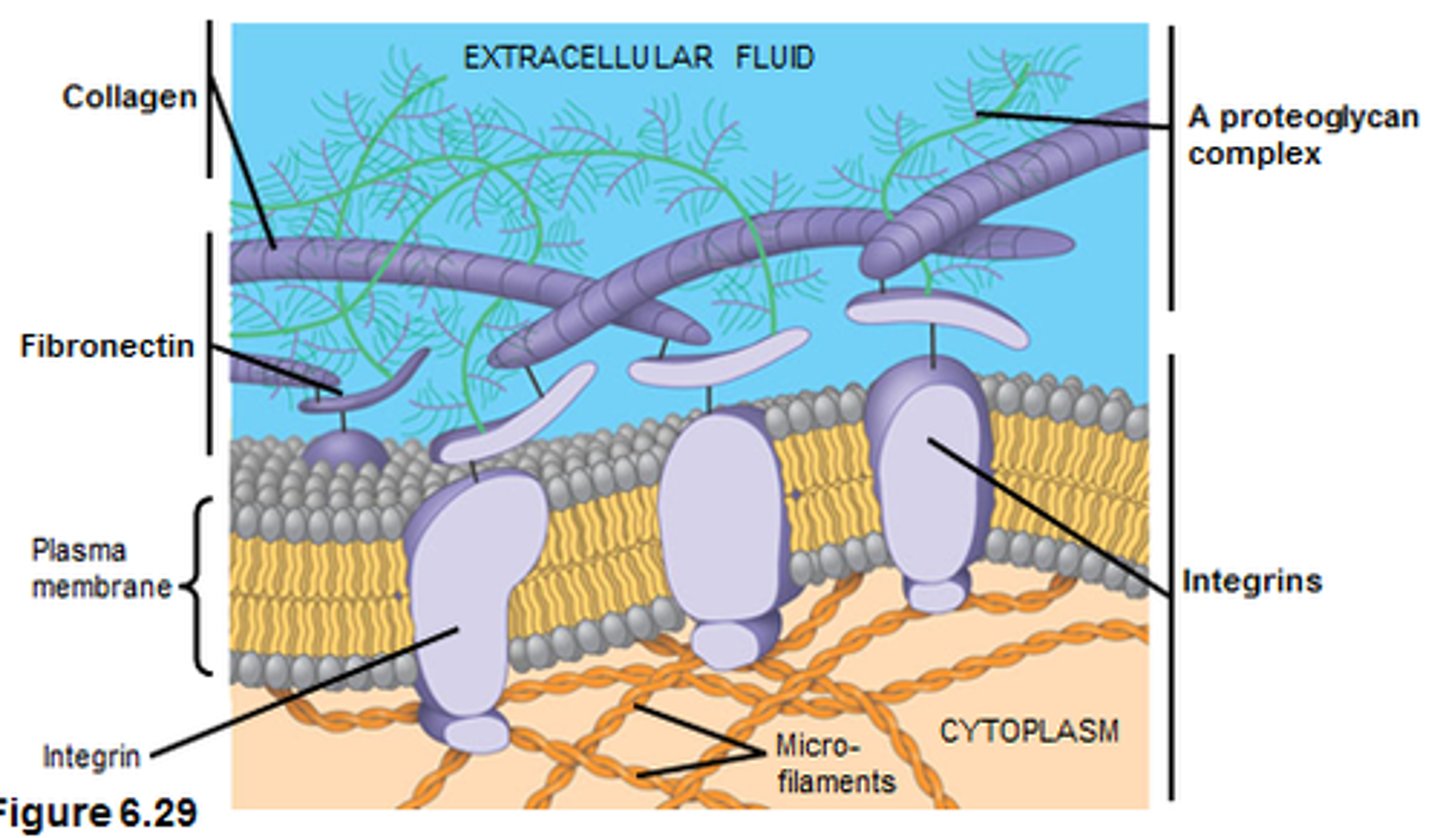
How do cells use glycoproteins for cell recognition?
They act as 'markers' on the cell surface which allows body cells to recognise each other. They also help the immune system to recognise foreign cells.
What is a glycolipid?
A lipid with a carbohydrate molecule attached.

What do glycolipids do?
aid cell recognition, adhesion and membrane fluidity
How do channel proteins make membranes selectively permeable?
When open, they only allow specific ions to diffuse across the membrane and the pore is a specific size
How do channel proteins work?
They form pores in the membrane for charged particles to diffuse through. The pores open in response to a stimuli like changes in voltage or the binding of a particular molecule
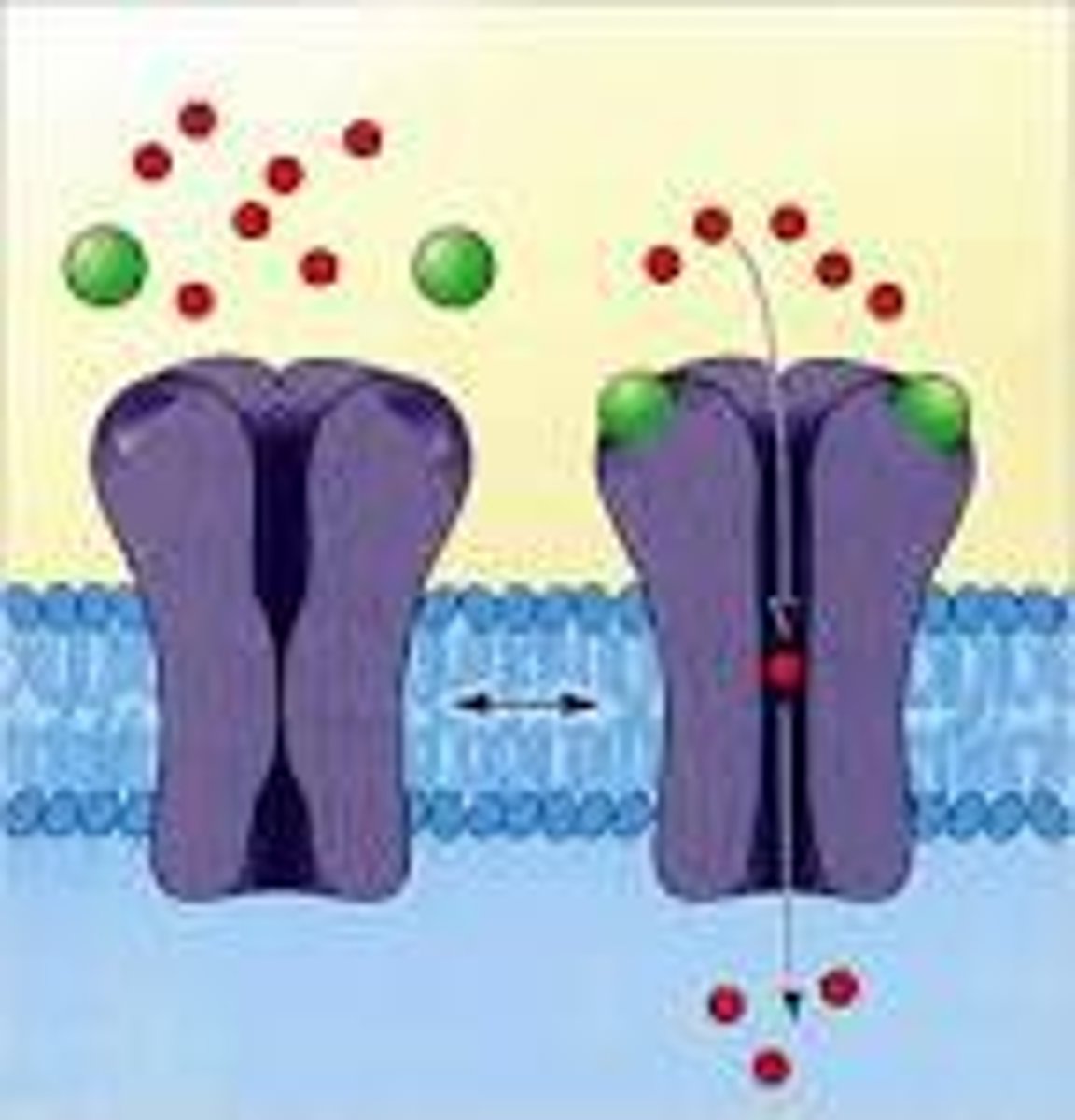
How do carrier protein work?
The carrier protein has a specific site that the solute molecules bind to. This triggers a conformational change and transfers the molecules to the other side of the membrane
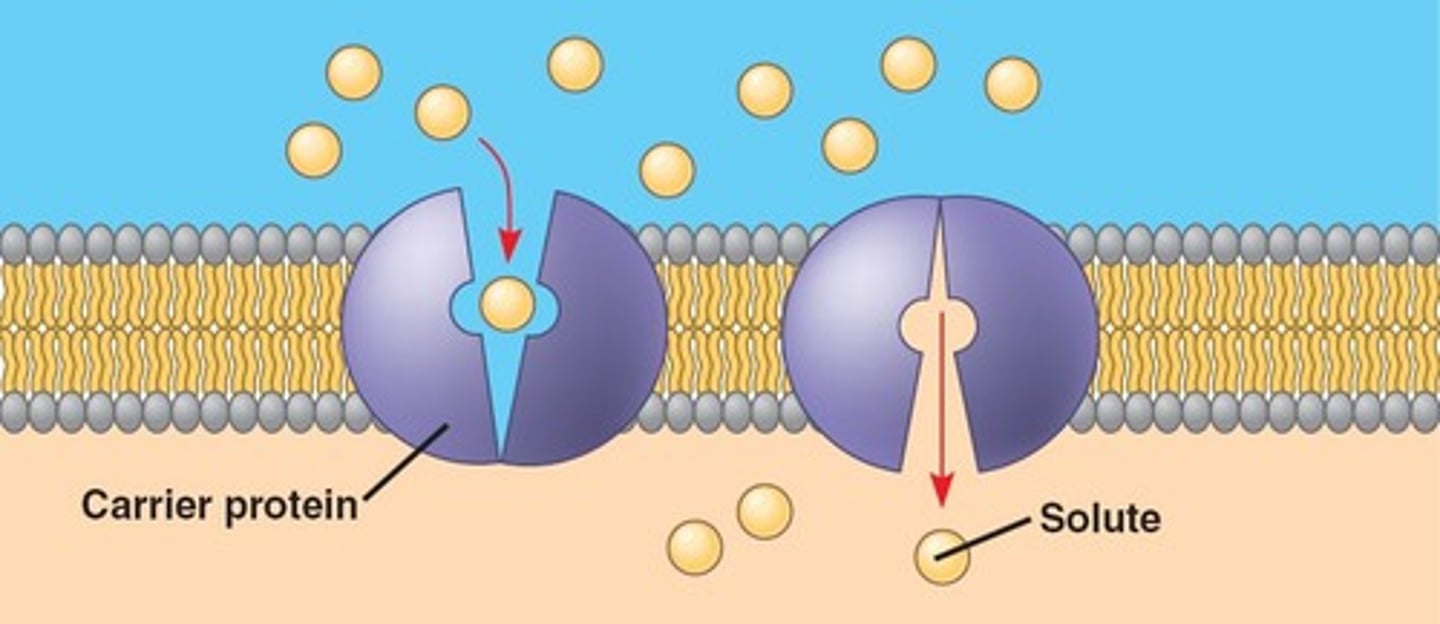
How do protein pumps work?
A specific solute will bind to the protein pump on one side of the membrane. The hydrolysis of ATP (to ADP + Pi) causes a conformational change in the protein pump which releases the solute molecule across the membrane. The phosphate leaves the pump so it can return to its original shape.
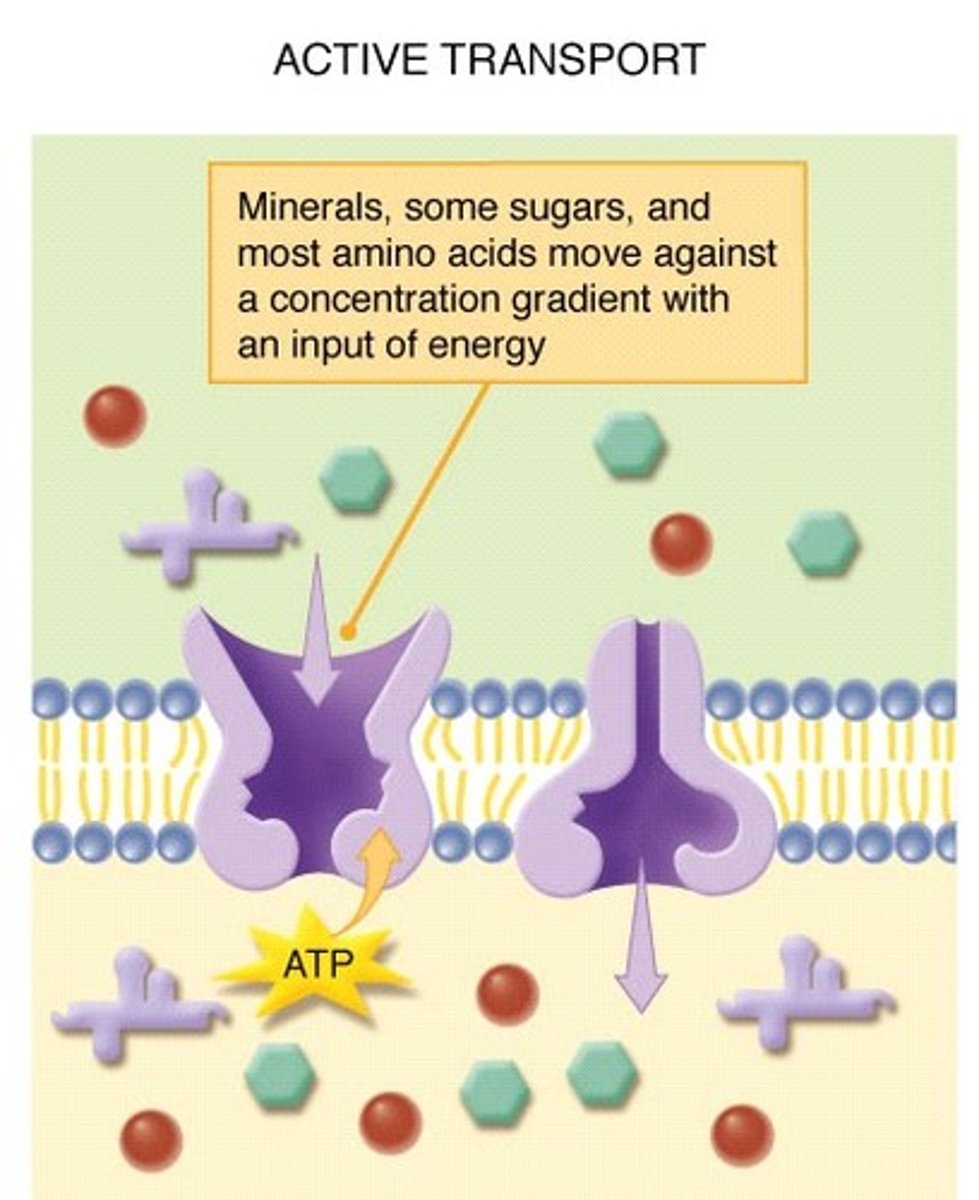
What's an example of active transport?
sodium potassium pump and ABC transporters are carrier proteins that pump antibiotics out of the cell.
Why is simple diffusion not considered selectively permeable?
Movement of particles only depends on size and polarity
The longer the fatty acid chain...
the less fluid the membrane will be
Why do saturated fatty acid tails make the membrane less fluid?
Due to the straight chains, they can pack tightly. So, it's more dense, less permeable and has a higher melting point
Why do unsaturated fatty acid tails make the plasma membrane less fluid?
They can't pack tightly due to their kinked chains. This weakens the intermolecular forces between them. So, the melting point is lower
How have some plants adapted their membranes to enable seasonal changes?
they can alter the saturation of the fatty acids depending on the temperature e.g increased unsaturation at low temps
What's one way that animals have adapted membrane fluidity?
Caribou have different saturations of fatty acids in different areas of their body depending on which experiences the cold more
How are the plasma membranes of animals in cold habitats adapted?
Antarctic fish have more unsaturated fatty acids that will become compact due to the cold so optimal fluidity is achieved
Describe the structure of cholesterol?
A hydrocarbon tail is attached to a steroid (4 hydrocarbon) ring with a hydroxyl head
Where is cholesterol found in the plasma membrane?
Fits in with fatty acid tails of phospholipids but its head is around the phosphate heads
How does cholesterol affect membrane fluidity at high temperatures?
It restrains the movement of fatty acid tails which makes the membrane less fluid and permeable. Therefore, stability is maintained
How does cholesterol affect membrane fluidity at low temperatures?
It prevents the fatty acids from packing tightly so that the membrane doesn't become stiff and fluidity is maintained.
How does exocytosis work?
A vesicle from within the cell moves towards the cell membrane where it attaches itself. When the 2 membranes fuse, the contents of the vesicle are released into the extracellular space

Give examples of exocytosis?
waste excretion, glycolipids made by SER, hormones excreted by endocrine glands
How does endocytosis work?
The plasma membrane folds inwards to form a cavity that can fill with molecules. They are trapped when the membrane folds back on itself. This vesicle then separates from the membrane and moves further into the cell
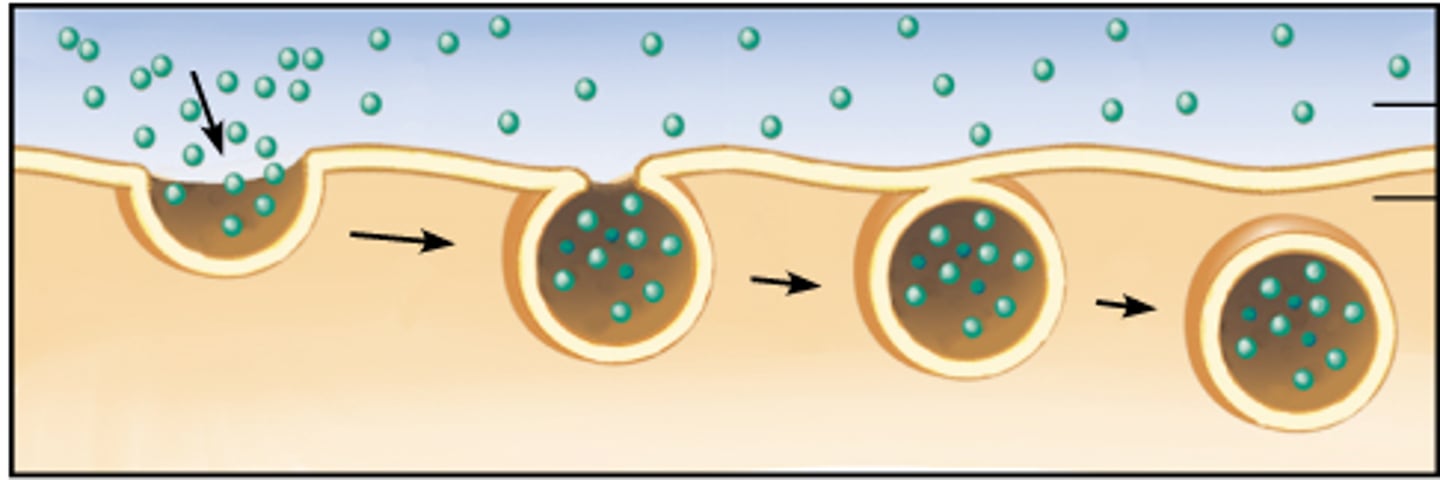
Give examples of endocytosis
phagocytosis, pinocytosis (cellular drinking) and proteins given to foetus from mother's blood
Do endo/exocytosis require energy?
yes
2 multiple choice options
What is the formation of vesicles affected by?
membrane fluidity
What do endo/exocytosis allow for?
bulk transport
How do voltage gated channels work?
When positive ions enter the channel, voltage is induced. So, the channel opens and allows the ions to leave or enter. the channel closes when the voltage changes again.
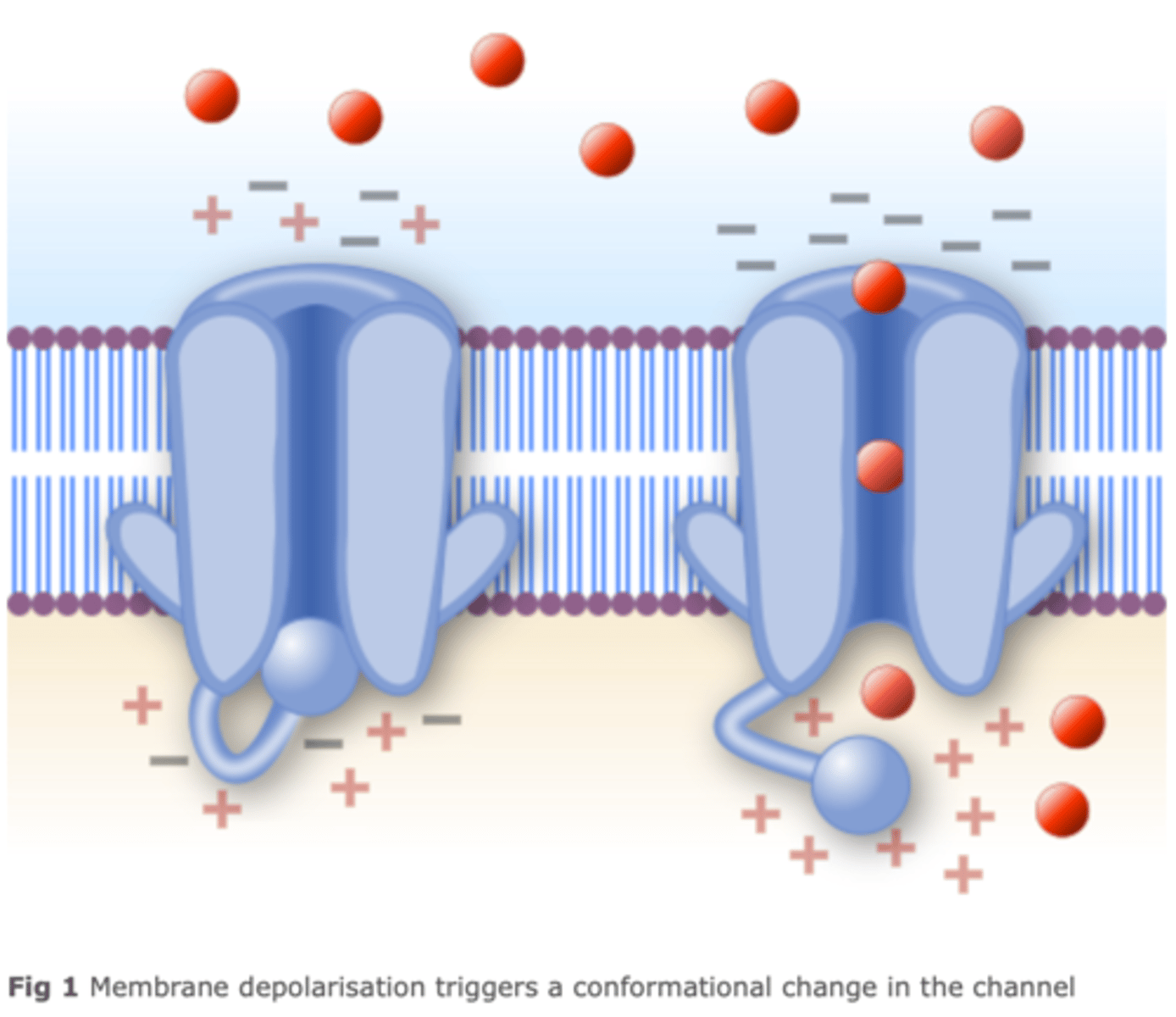
How do ligand-gated ion channels work?
A molecule like acetylcholine binds to the receptor which triggers a conformational change which opens the pore for cations to pass through. The movement of the ions causes a change in voltage which allows voltage gated ion channels to open. Once the molecule disassociates, the pore closes and the shape reverses

How do sodium potassium pumps work?
-From inside the cell, 3 sodium ions attach to intracellular binding sites on the protein pump
-ATP transfers a phosphate to the pump which changes its conformation
-The pump opens to the outside of the cell and the sodium ions are released from the cell
-This allows 2 potassium ions to attach to the binding sites
- this triggers the release of the phosphate which causes the pump to return back to its original shape so the potassium ions enter the cell
How do sodium-dependent glucose transporters work?
When sodium ions pass through the transporter, energy is released. This energy is enough to move glucose across the membrane against the concentration gradient
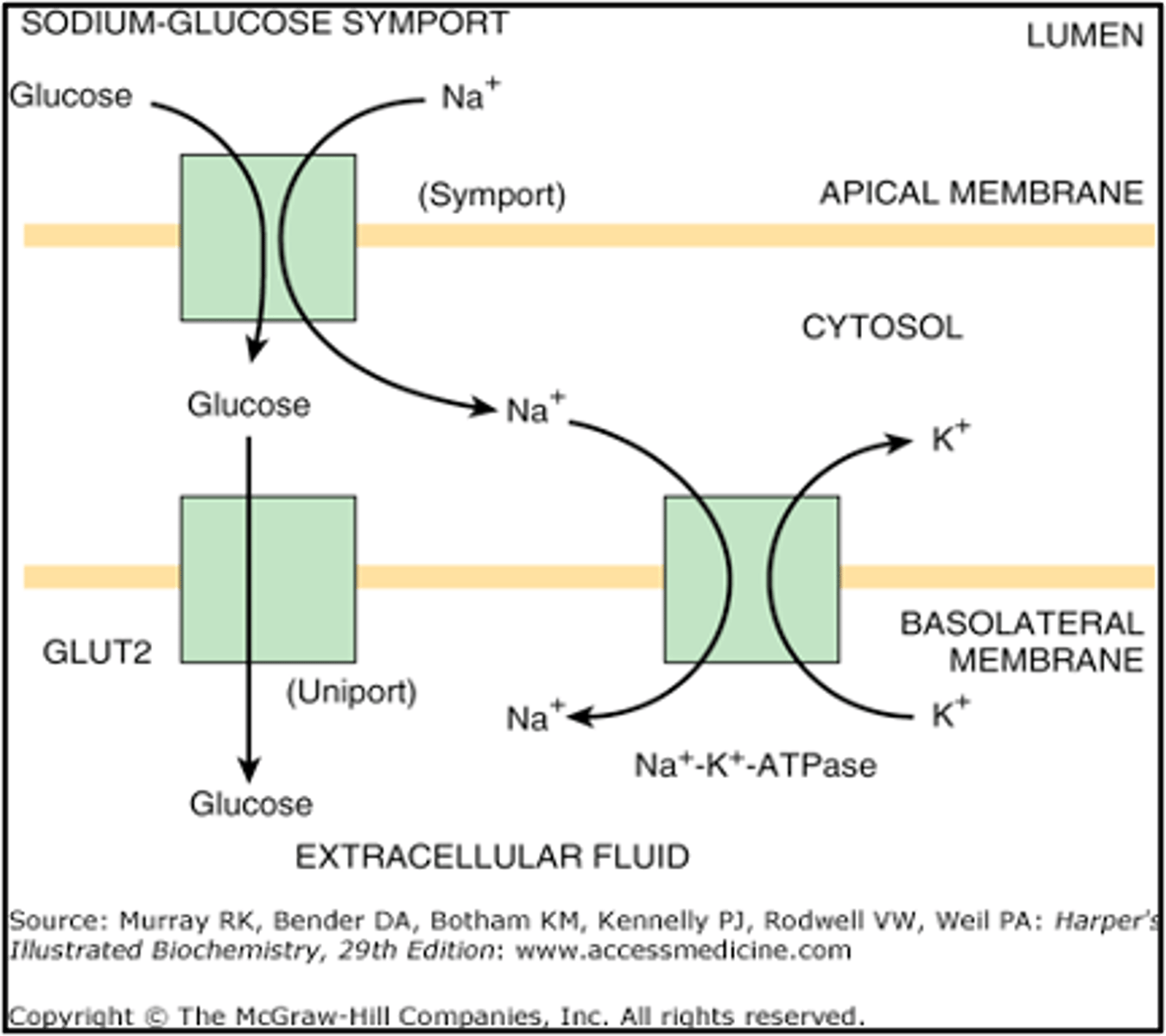
Why are sodium dependent glucose cotransporters important?
they play an important role in glucose absorption by the intestinal epithelial cells.
How are ligand and voltage gated channels similar?
- Both result in the movement of ions.
- Both are activated by the binding of ligands.
What are CAMs?
membrane proteins that help cells interact with each other or with their extracellular matrix
What do adherens do?
facilitate cell to cell adhesion for structural stability; know as anchors
What do tight junctions do?
form a tight seal between cells to prevent the unregulated movement of molecules

What are gap junctions?
intracellular channels physically connecting neighbouring cells for the movement of molecules; a type of communicating junction
What are desmosomes?
A type of adhesive junction that binds adjacent cells together to form an internal tension-reducing network of fibres.
